Backpacking in the Rain: Let Nothing Stop You
When we decide to head out for a backpacking trip, one of the first things we do is check the weather. The ideal situation is a mild, sunny day, and often times the last thing we want is rain.
This is because when we think of backpacking in the rain, we conjure up images of being wet, cold and miserable. Because of this, we try to avoid heading out in this type of weather, but there are times when we simply can’t pay attention to the elements.
[the_ad_group id=”21″]
Whether we have a burning desire to get out in the woods and we won’t be deterred by the rain, or we are out on a multi-day hike and we have no other choice, it is important to know how to properly prepare yourself for inclement weather.
By taking the appropriate steps before heading out on your hike, you will find that heading out while it is raining is actually not that bad, and, at times, can actually be quite enjoyable.
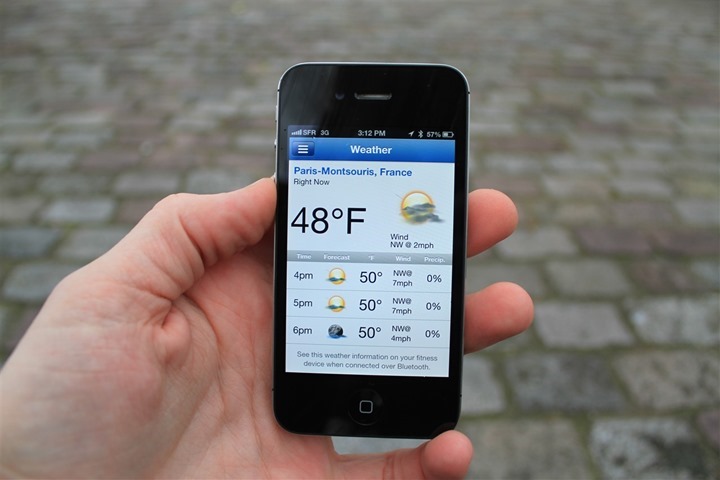
We are going to go over some of the key things you need to remember when heading out in bad weather so that your adventure can remain enjoyable and not turn into a disaster.
Get the Right Gear
This is probably the most important thing you need to do. Human beings have been able to survive intense conditions throughout their existence due to their ability to develop gear that protects them from the elements. How else would civilizations from Siberia, Northern Canada and Alaska survive?
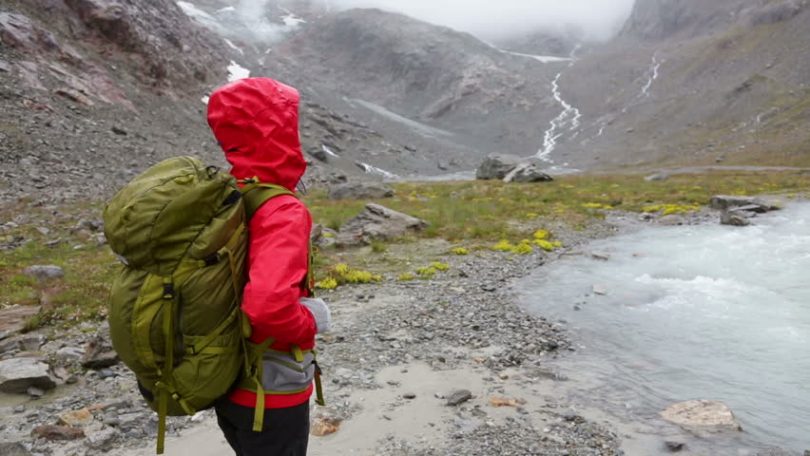
So when you head out when it is raining, or you are expecting to encounter some rain, the equipment you bring will make or break your experience. Here’s a list of the essentials:
Rain jacket/pants
This is probably the most obvious piece of equipment you need to be prepared for an adventure in the rain. What is important here, though, is that you find something that is hard shelled.
The rain jacket you have to wear to work or to watch a football game outside is likely not strong enough. You need to think that you could be exposed to rain repeatedly for a period of hours and hours with no break.
A thin, “water resistant” jacket will not hold up to this kind of abuse, so you need to be sure to have something that is more heavy duty. It is also important to have something to cover your legs.
When you head out in the rain on a normal day, you might exclude this because it is either uncomfortable or unnecessary, but in this case, it doesn’t matter. You need it.
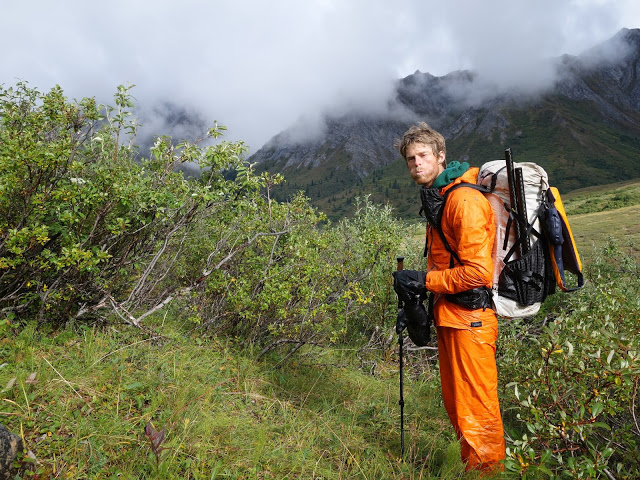
After a few hours in the rain, water will drip from your jacket to your pants and before you know if, they will be completely soaked, which will make you cold and will turn your adventure into something you want to be over quickly.
One thing to watch out for, though, is how breathable the material is. The more waterproof it is, the more it will trap in heat. If you are hiking somewhere that is very humid or warm, think more tropical locations, you could overheat.
There is some gear out there made specifically for this, so think about where you will be backpacking and then look for something that will most fit your needs.
Avoid cotton
One steadfast rule you should maintain when preparing for some time out in the rain is to avoid cotton. This is because it has virtually no wicking properties. When cotton gets wet, it stays wet. This is not only uncomfortable, but it can also be dangerous.
If your inner layers get wet and stay wet, this can cause you to get cold, and once you are cold, it is virtually impossible to warm back up again. This can put you in a really difficult situation.
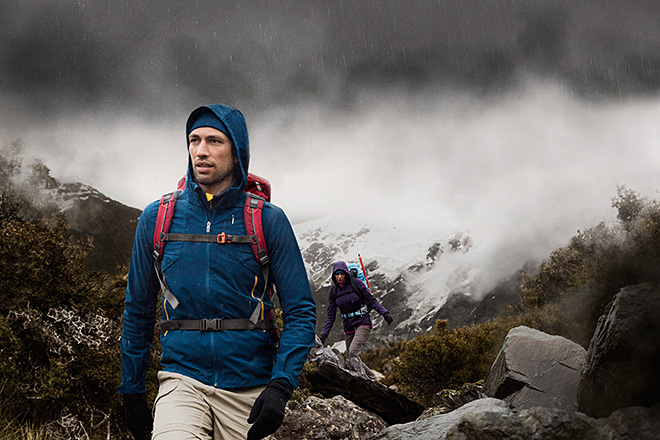
To avoid this, try to wear naturally wicking materials such as wool, or there are lots of synthetic materials out there designed specifically for this purpose. They might not be as comfortable as cotton, but when the rain gets heavy, you’ll be thankful you made this choice.
Waterproof boots
Keeping your feet dry and warm should be one of your top priorities. Anyone who has spent some time hiking with wet feet will know how awful this is. The most obvious thing to do is to make sure your boots are waterproof.
If you have leather boots, make sure that they are properly treated so that they provide you proper protection. If your boots aren’t leather, make sure they are fully waterproof.
Some boots are advertised as being waterproof, but after significant use, they start to let water in. Another thing to look out for is low-top boots.
These shoes don’t go all the way up to your ankle, and while they are more comfortable for some, they have the tendency to let water in from the top. If you think you are going to be heading out in rainy weather, it is likely a good idea to make sure you are as covered as possible.

You could look for boot covers, which are essentially bags that you put over your shoes to keep them dry, but these are not only uncomfortable, but they also sacrifice traction and don’t work great for long periods of time.
The other thing to look for in your boots is the sole. You will want something with deep lugs so that you can grip slippery surfaces and not feel like you are going to fall every time you step on a rock.
A set of dry clothes
After some time out in the rain, the best thing you can have with you is a set of dry clothes. The most important things to have are socks and underwear since these are what are closest to your body, but dry shirts and pants are also key.
If you have super heavy duty rain gear, this might not be the biggest need, but chances are some of your stuff will still get wet, so having something warm and dry to change into when you make camp will be a huge advantage.
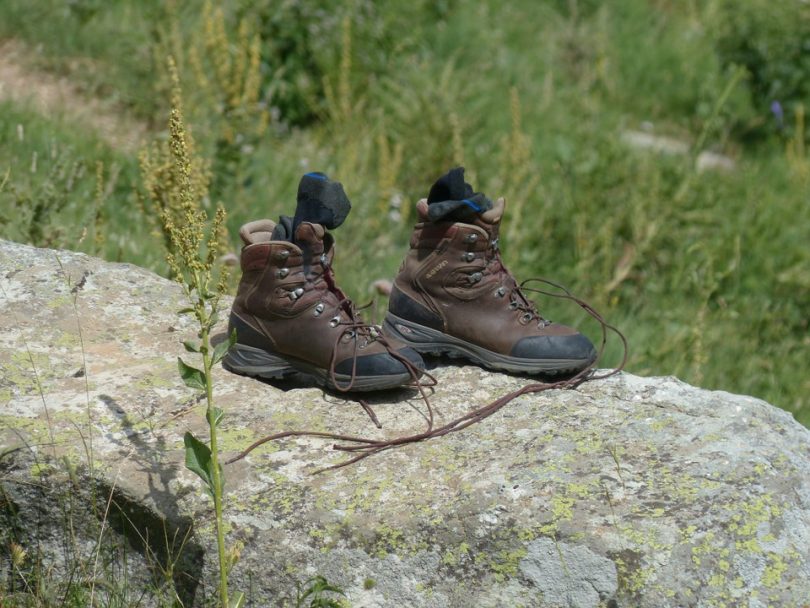
What is important to remember, though, is that you need to protect these clothes inside your pack. Put them in a plastic bag or a dry bag so that they do not get wet. These warm clothes might be lifesaving when you get to camp, so make sure they stay dry as you trek through the rain.
Waterproof pack protector
In addition to plastic bags or dry bags for your dry clothes and electronics, you will want to have something to protect your bag. For most backpacks, this is simply a waterproof cover that wraps around the bag and tightens with a drawstring to keep water out.
It is important to check if there is one that is specific for your bag, since having a good fit will go a long way towards helping your bag stay dry.
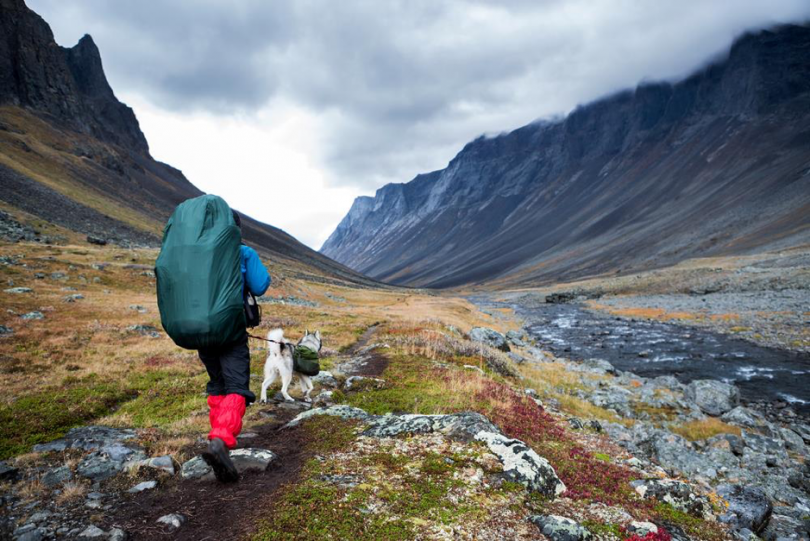
You could invent your own with plastic bags, but this is sure to be less than ideal and may lead to your bag and its contents getting wet. If you are really concerned about the stuff inside your bag, you can invest in waterproof backpack liners.
These are exactly what they sound like; they go inside the bag to help add another layer of protection against the rain. They tend to be expensive, but if you are looking for maximum protection, it might be a good idea to invest.
Trekking poles
These may be a piece of equipment you bring with you anyway, but if not, you should definitely consider doing so when heading out in the rain.
[the_ad_group id=”22″]
When it starts to get muddy and surfaces get slippery, having something to support you will be essential. There may not be trees or branches nearby to help you break your fall, and even if there are, this isn’t the best way to stay upright.
If you’re worried about space, you can find retractable trekking poles that fold up and can be stored easily in your bag. Check out the best trekking poles that can help you on your next adventure.
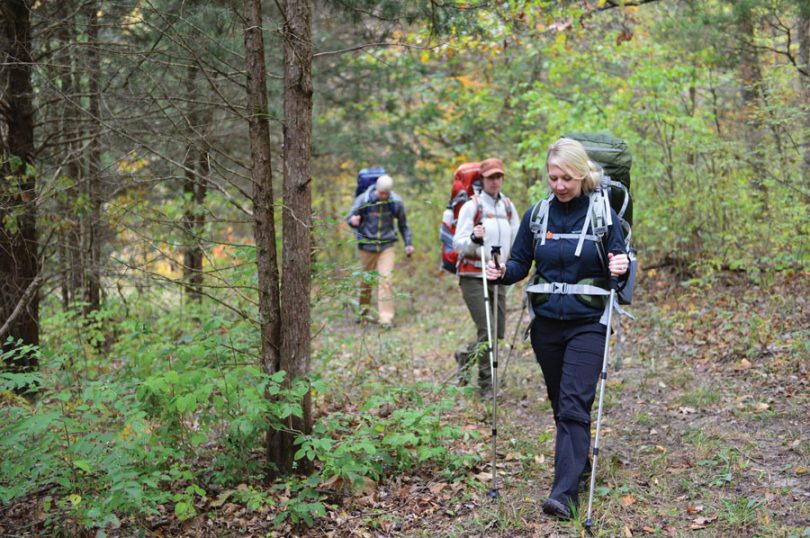
Some people don’t like to use these because they think they make them look strange, but this is likely because they’ve never tried them. The added support and security they provide is very helpful, especially when backpacking in the rain.
Stay Safe
Even with all the necessary gear, there are still some risks to hiking in the rain. Things won’t be quite the same as when you head out on a sunny day, keep this in mind. Here are a few tips to help you stay safe while you are out on the trail in the rain.
Take caution on slanted, rocky surfaces
Even in dry conditions, these surfaces can be slippery. If you add some water and a little bit of dirt that has likely run over because of the rain, they can become downright dangerous.
Make sure you have a way to support yourself, whether it is a friend or your trekking poles, and if you can, test the surface before walking on it. Even if you have boots that give amazing traction, these rocks can still give you trouble.
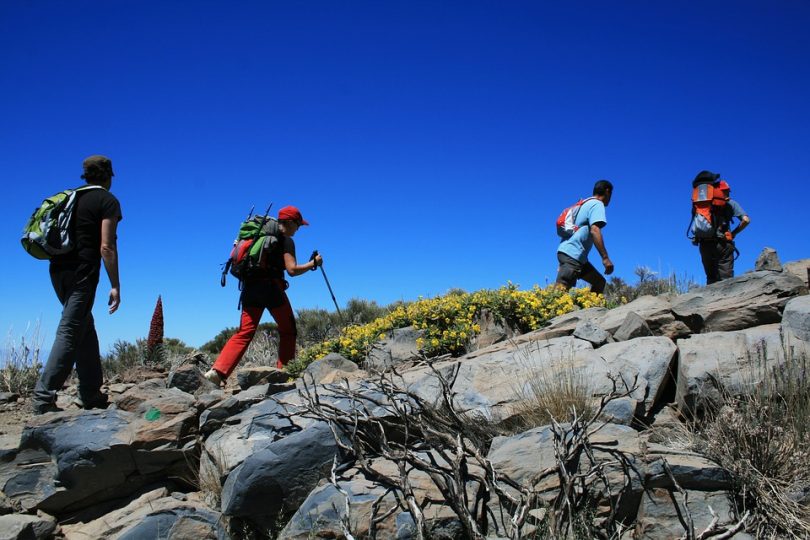
Always approach these surfaces sidestepping, especially when going downhill. This means that if you slip and fall, you will fall to the ground on your side, instead of down the hill on your face. If you are descending a steeper hill, this could lead to serious injuries, so put safety as your top concern.
Don’t wade through flooded streams or rivers
You might remember this piece of advice from when you were learning how to drive a car. Well, the logic is the same here. If you approach a stream or a river that is obviously flooded, approach with caution.
It may look harmless from a distance, but the reality is you have no idea how deep it is or how fast the current is moving now that there is so much extra water.
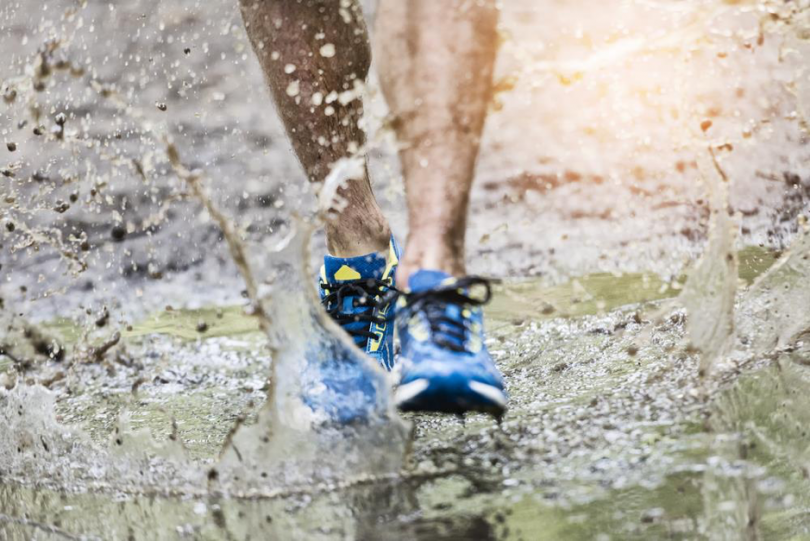
If you can see to the bottom, this might give you an idea as to whether you can cross, but it is still not a guarantee. If you absolutely must cross, do so with extreme caution and be sure to use a stick or pole to help you gauge the depth before each step.
Stay warm
As you get perpetually bombarded with rain, it will be easy for you to get cold. One way to prevent this is to wear layer, or at least have them in your bag. See our list of the best layers clothing for any kinds of weather for more options.
When you feel yourself getting cold, find some shelter under a tree and add a layer. It is good to do this before you feel yourself really getting cold. If you wait until this happens, it might be very difficult to get your body temperature back up to normal levels.
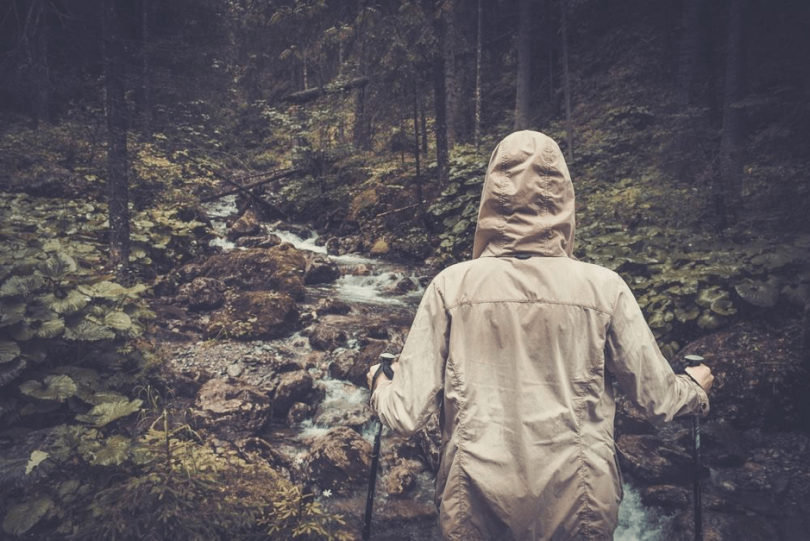
Stay cool and hydrated
This somewhat goes against what was just mentioned, but this is why the environment in which you are hiking is so important. If you are in a cooler climate, staying warm is important.
However, if you are hiking in a warmer, more humid area, it is possible for you to overheat and/or dehydrate. When we are constantly being soaked by rain, we might not feel as warm as we actually are and might not notice just how much water our bodies are losing.
If we lose sight of this, we may all of a sudden start to feel the effects of dehydration, which can be very dangerous, so it is important to maintain a normal pattern of hydration even though we don’t feel as “warm” as we might in other situations.
Additionally, if you are wearing a thick, heavy rain jacket or suit, your body heat can get trapped inside. For this, layers are once again great.
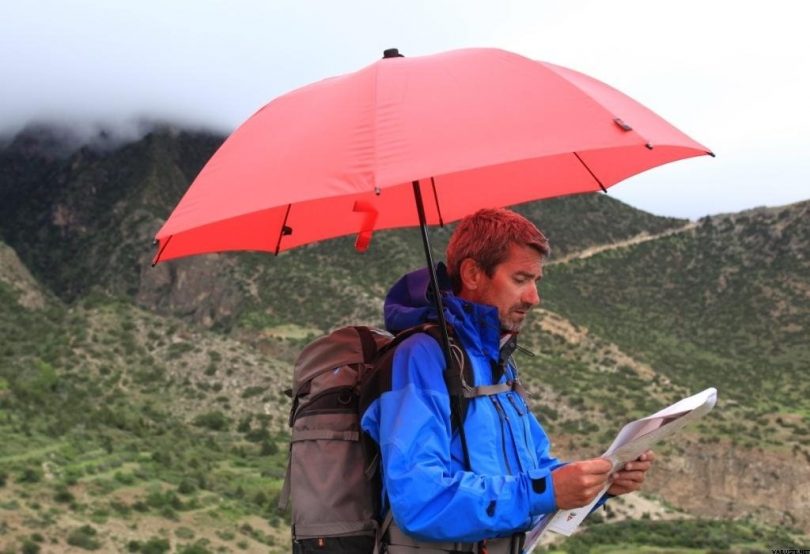
When you feel yourself getting warm, simply stop and shed some inner layers. As it continues to rain you will need to keep your raingear on, so it is important you do not let your body overheat, as this can cause some serious issues down the road.
Get Dry
The last main thing you need to do in order to be able to backpack in the rain is to have a way to get dry. It can’t rain forever, so it is important you have a plan in place for when it does stop so that you can get dry and recover from your time spent in camp.
Find campsites near trees
This is pretty straightforward, but you will want to make camp somewhere that offers you as much natural cover as possible. This will allow protect you from further rain and give you and your equipment the chance to dry out.
Also, if you pitch your tent under trees, you can be sure that your night will be a little dryer, which will allow you to get some much-needed rest.
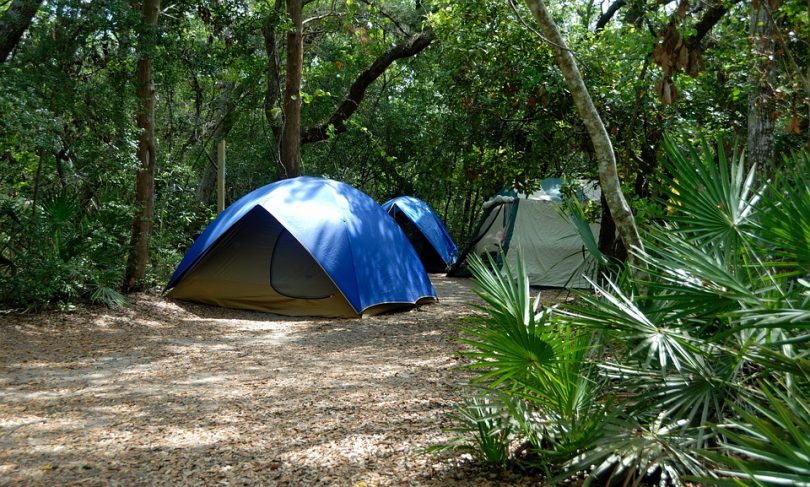
However, one thing to look out for is broken limbs and branches. Inspect the trees that are going to give you cover. If there are branches that look like they are ready to fall, expect them to do so when the bad weather comes. Move away from them and try to find an area where you are not in the way of these branches.
Take advantage of the sun
If you are lucky, the rain will break at some point and the sun will come out. When this does, take advantage of it, even if you aren’t at your destination yet.
You might only have a short window of warmth, so it is important you do all you can to dry out while it is possible. Take off some layers and hang them in trees where the sun and wind can access them so that they can dry quickly.
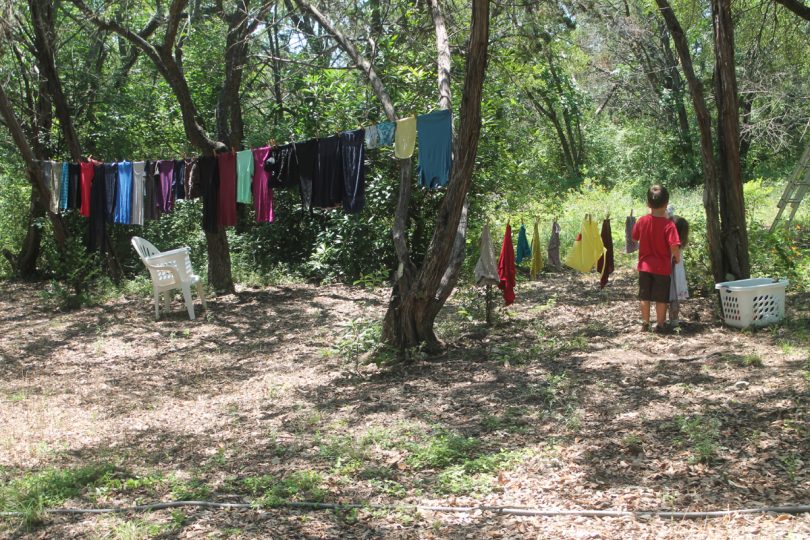
This might also be a good time to take off your socks, change them for dry ones and let the wet ones dry in the sun. It might be tempting to want to just shed some layers and continue on hiking in the warm weather, but in the long run, you will be thankful for taking a break and giving you and your gear the chance to dry out.
Use tarps or other covers to protect clothes
When you do make camp, a good thing to do is to hand a tarp (if you have one) between some trees so that you can have an area to let your wet clothes at the very least air out.
[the_ad_group id=”23″]
The tarp is good because it will allow clothes the chance to dry even if it keeps raining. Of course, they won’t be able to dry too much if the air is still humid from the rain, but at least it is something, and with the tarp, you can be sure you are heading in the right direction.
Go ahead, you’re unstoppable!
So as you can see, hiking in the rain really does not need to be a disaster. With a little bit of planning in terms of gear and what to expect, you can easily prepare yourself for the inclement weather.
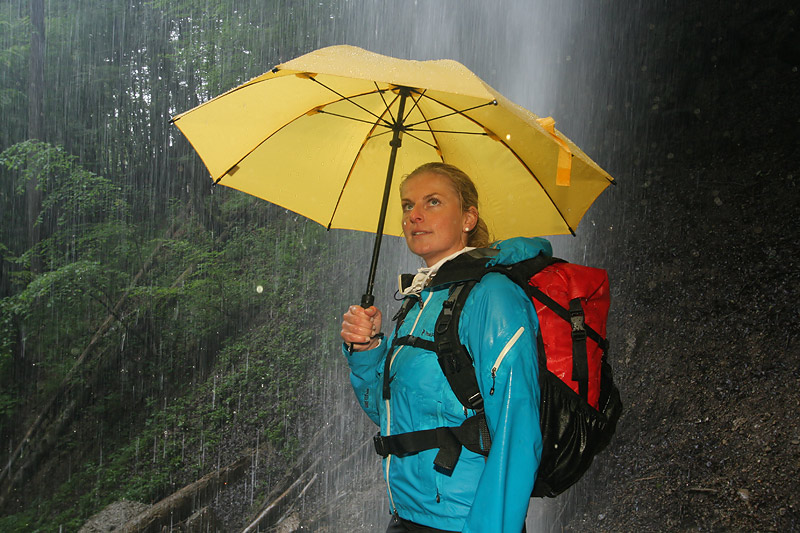
If you are really prepared, you might actually find yourself enjoying the rain. It can be quite peaceful and can really help you disconnect and enjoy all that nature has to offer.
See also: Best Hunting Rain Gear: Must Have Items for Every Hunter
Of course, the priority is to stay safe, but with the information provided here, that shouldn’t be too much of a challenge.
What are your experiences in the rain? Any tips you can share with us? Any questions about something we didn’t discuss? Let us know so that we can all be unstoppable against the rain.
For the top hiking rain gear you can use, see our comprehensive and useful list.


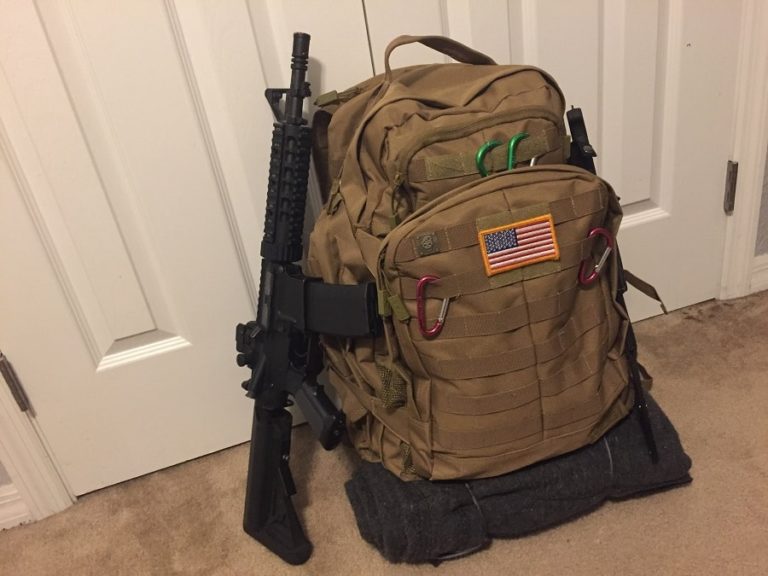
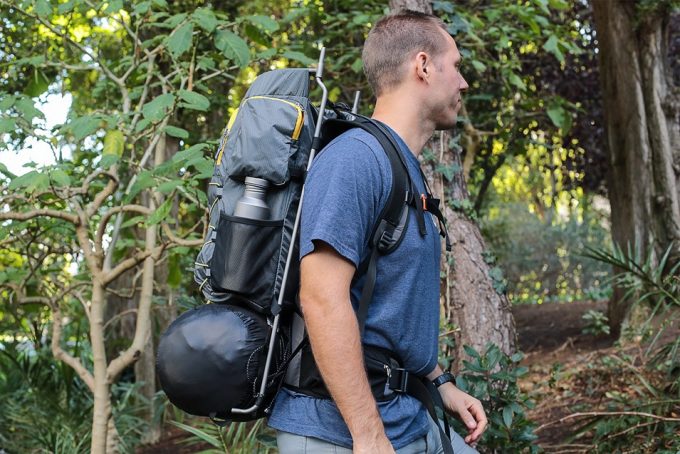
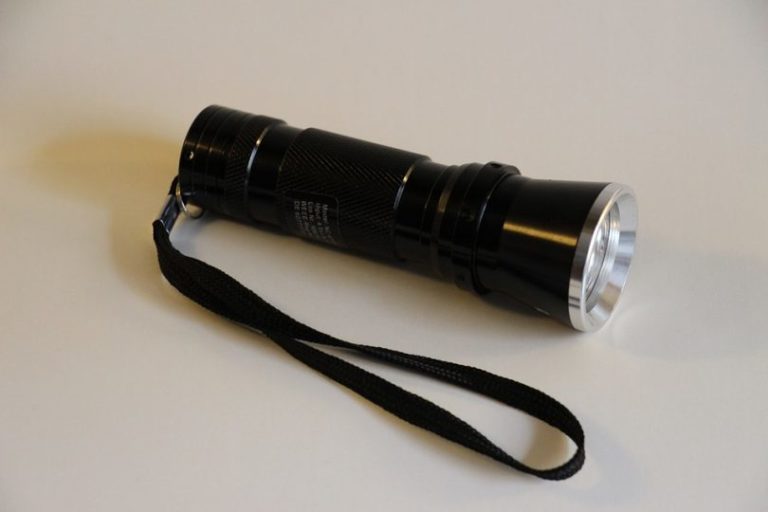
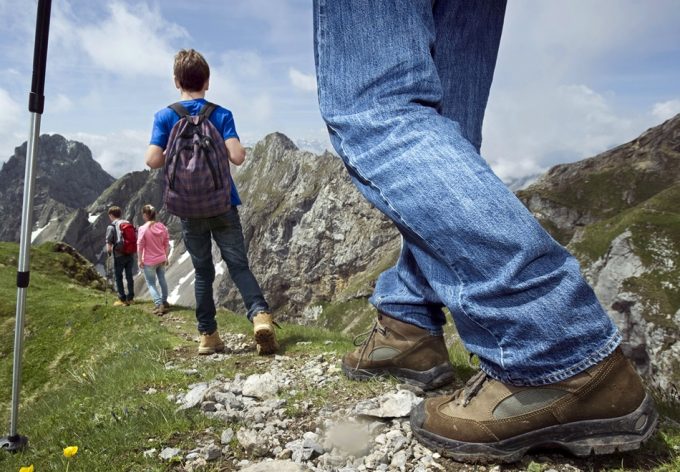

I always wore boots back in my hey day, but with my old knees, the weight really bogged me down. Later I found the Inov8 Roclite 325. The great thing about these shoes, is they dry really quickly. No matter how waterproof your boots are, they will let water in, and then they never get dry. Plus, they’re hi top, and light enough that my knees aren’t killing me after a long hike.
Great you’ve found the perfect boots for you! When hiking, boots is a great consideration. You have to understand how well your legs may take you during the hike. With the right footwear, you’ll be able to maximize ground coverage as well as ensure your feet’s safety and comfort.
I always wore boots back in my hey day, but with my old knees, the weight really bogged me down. Later I found the Inov8 Roclite 325. The great thing about these shoes, is they dry really quickly. No matter how waterproof your boots are, they will let water in, and then they never get dry. Plus, they’re hi top, and light enough that my knees aren’t killing me after a long hike.
Great you’ve found the perfect boots for you! When hiking, boots is a great consideration. You have to understand how well your legs may take you during the hike. With the right footwear, you’ll be able to maximize ground coverage as well as ensure your feet’s safety and comfort.